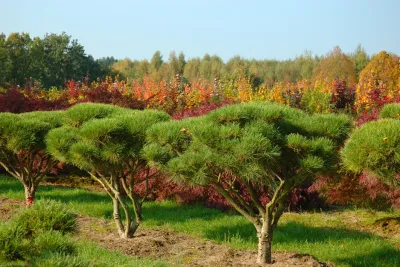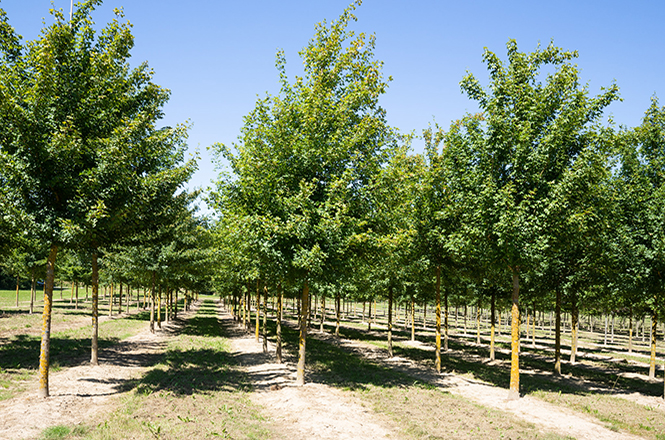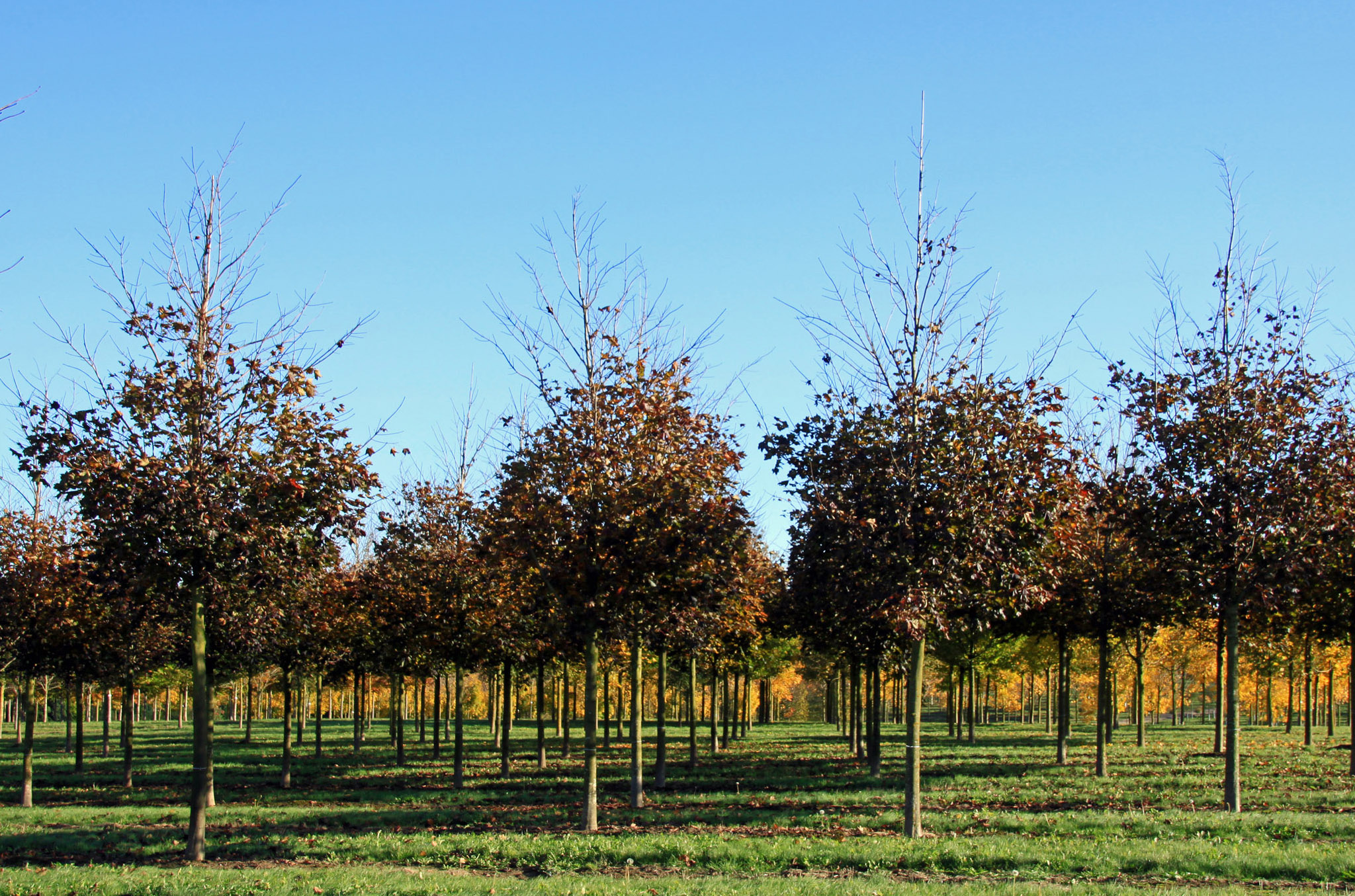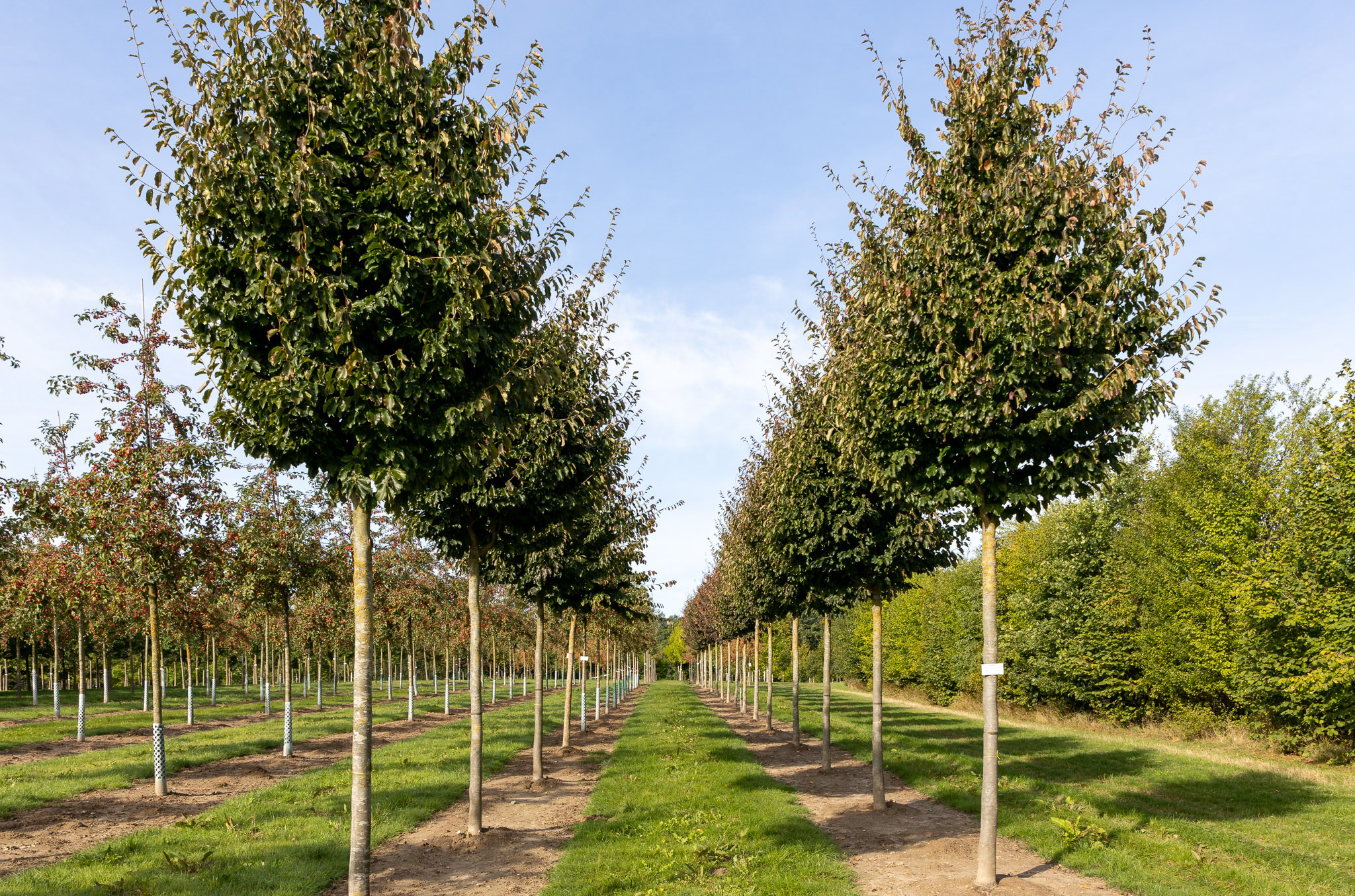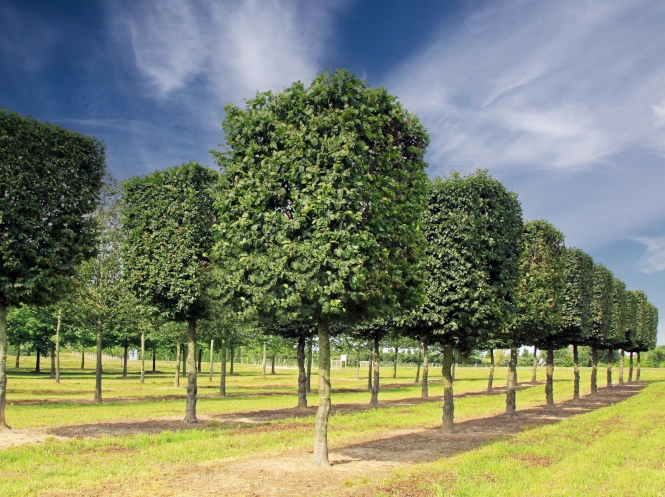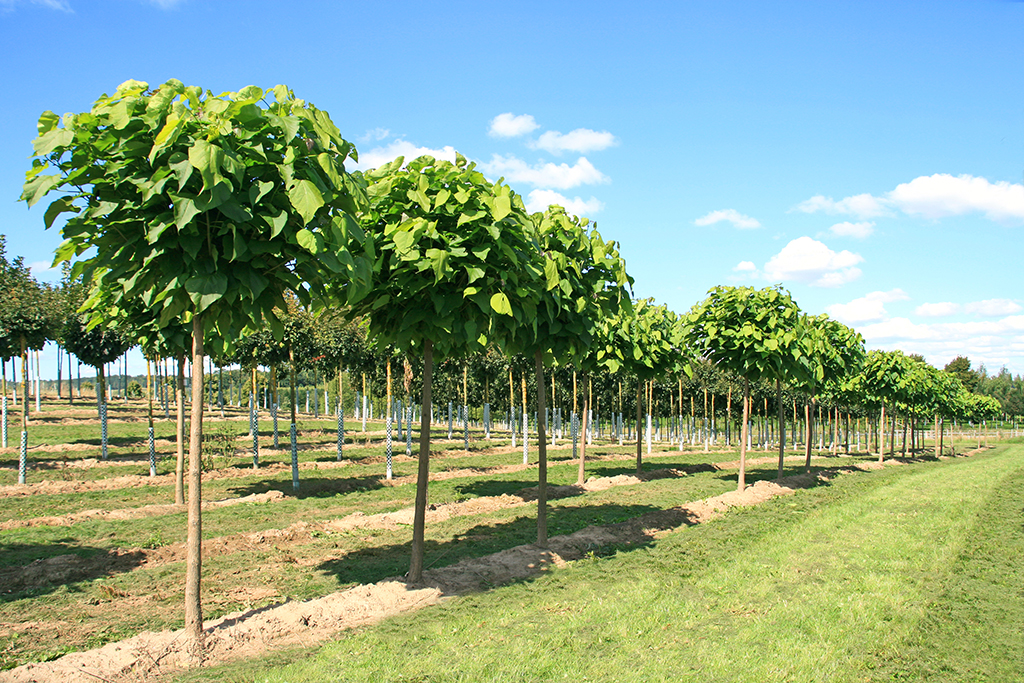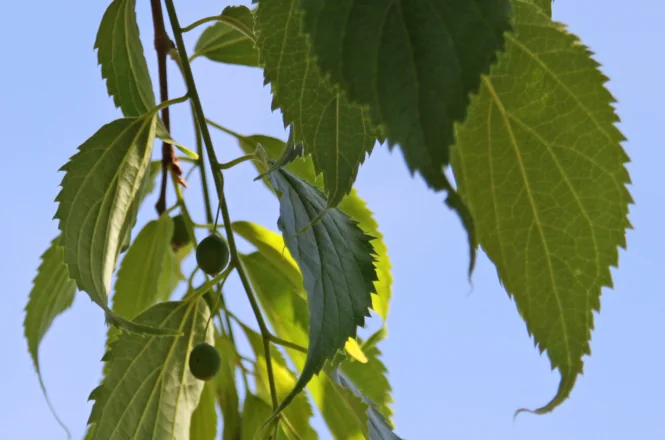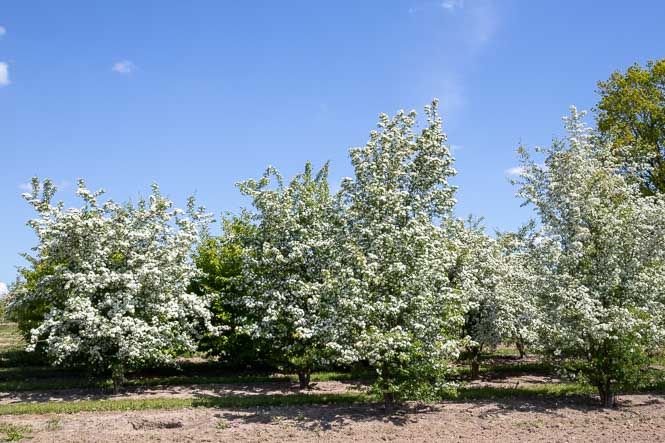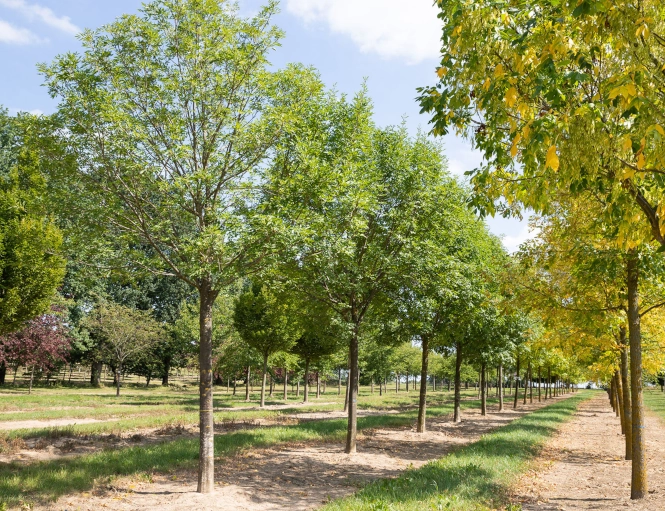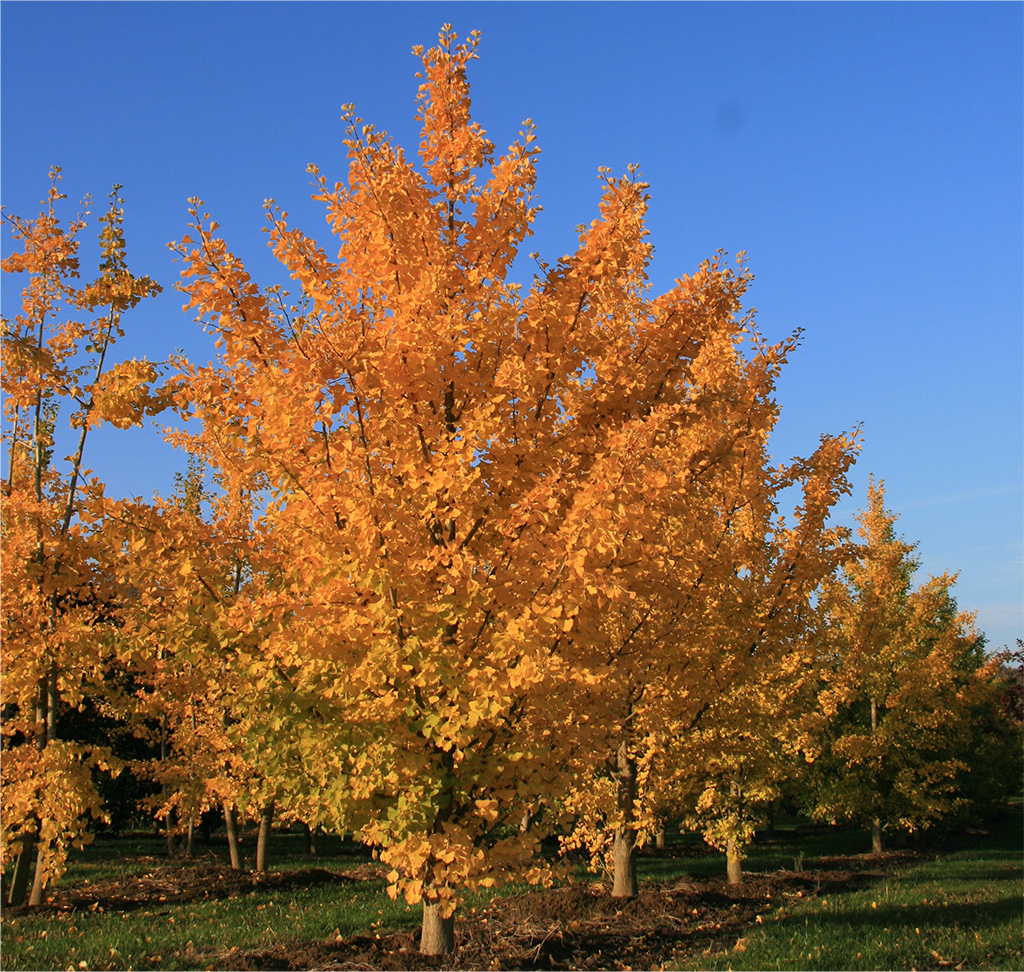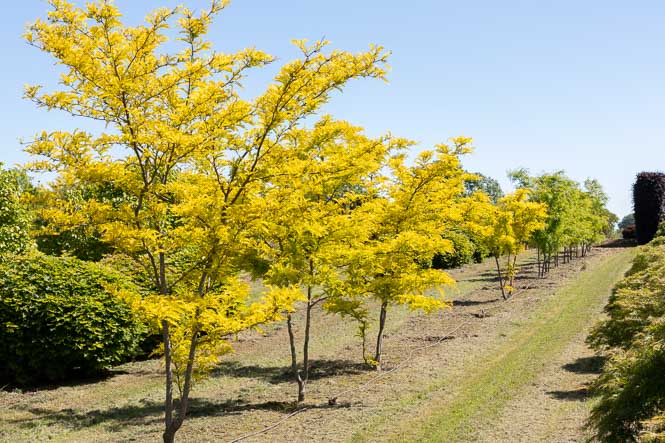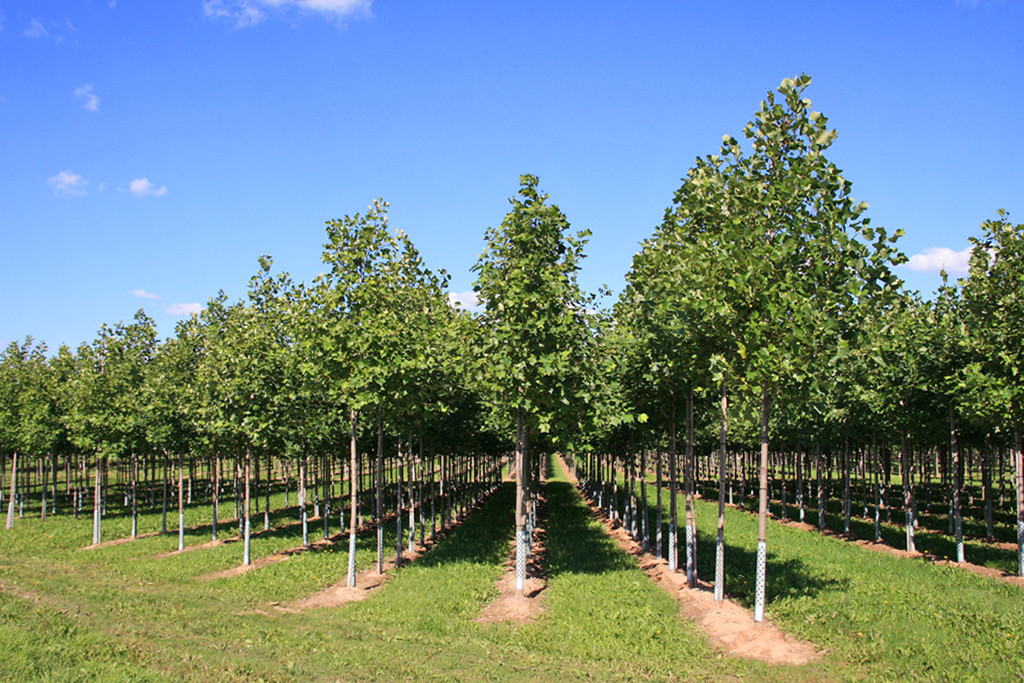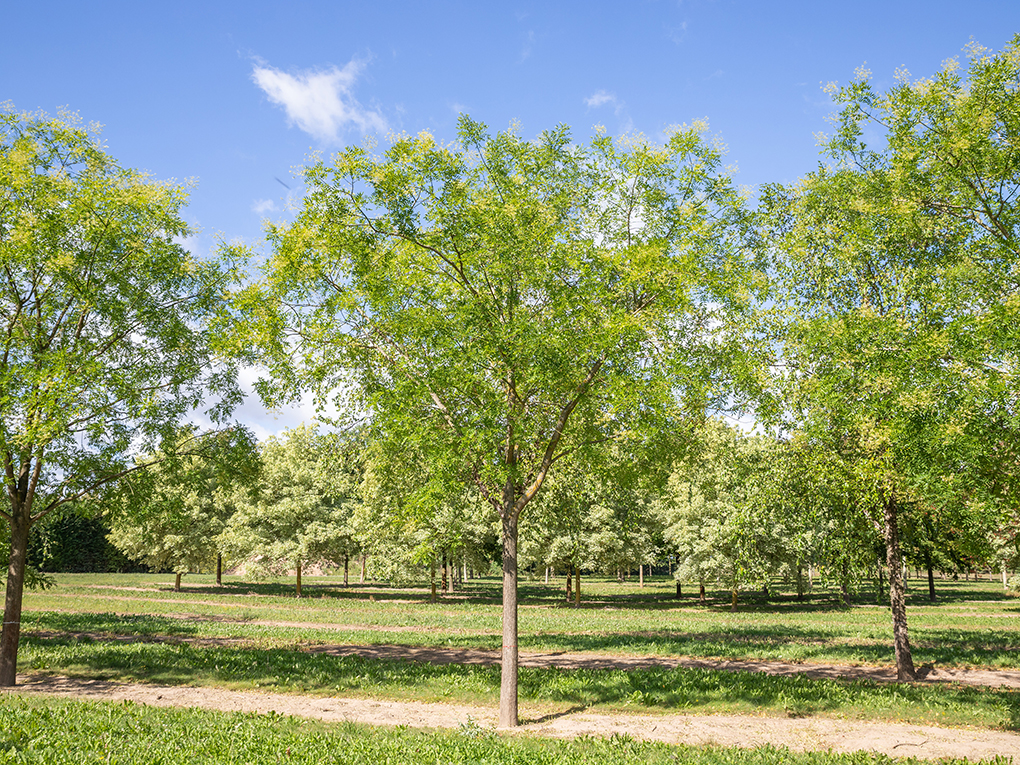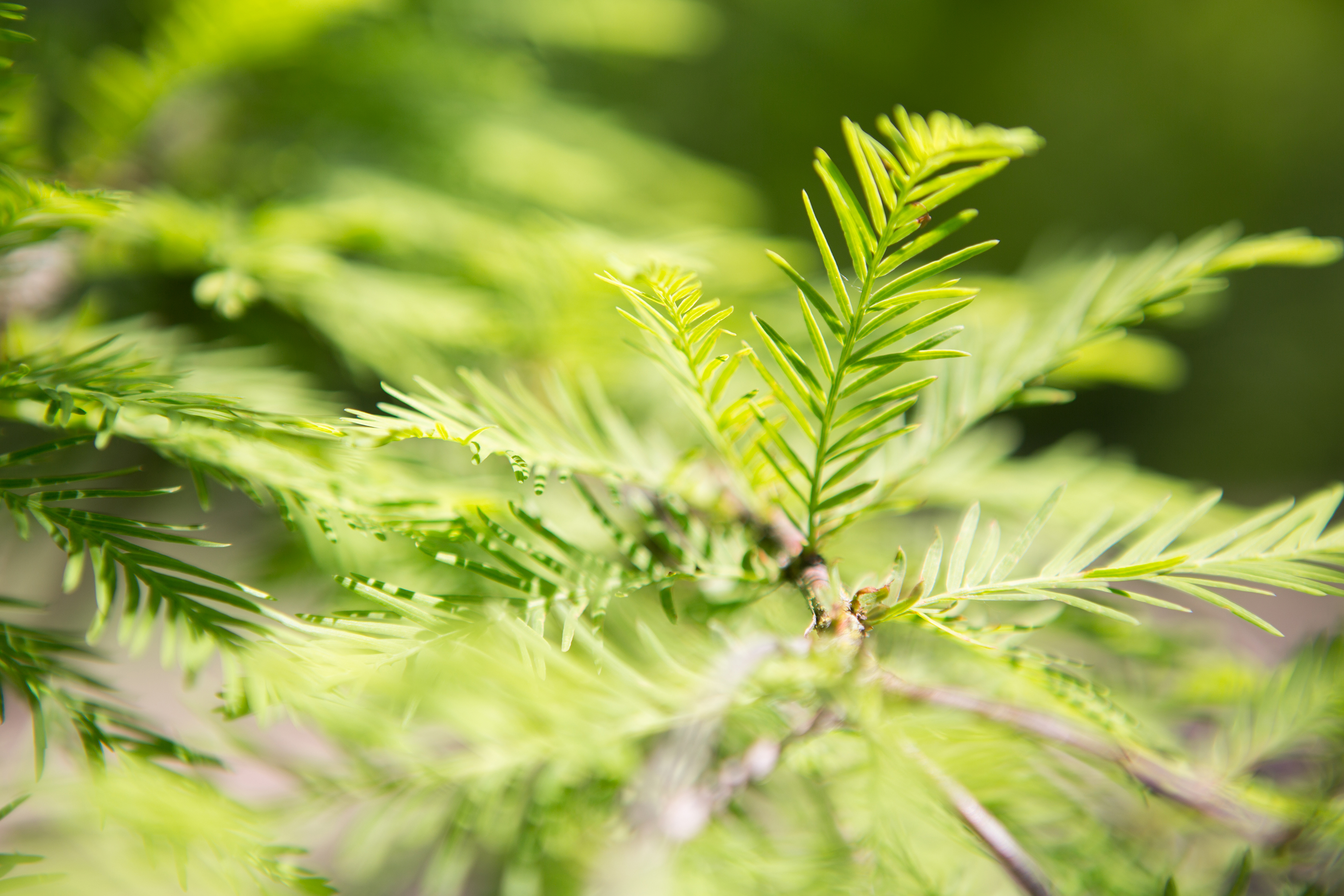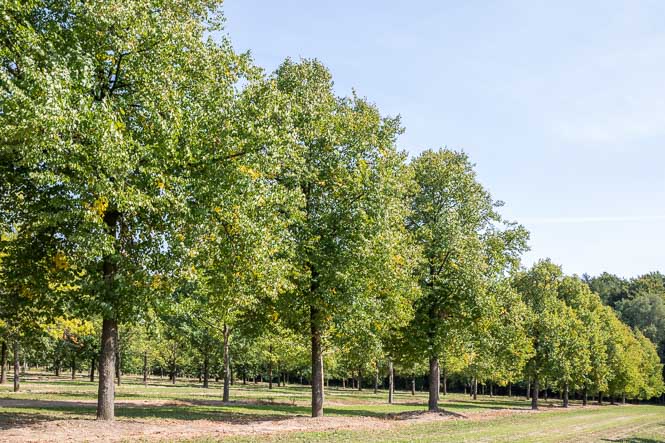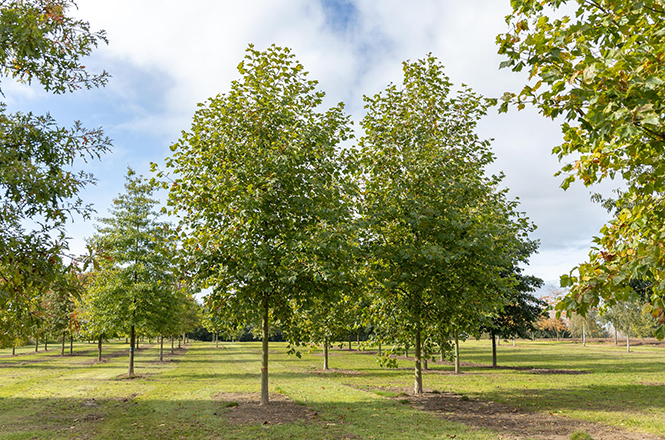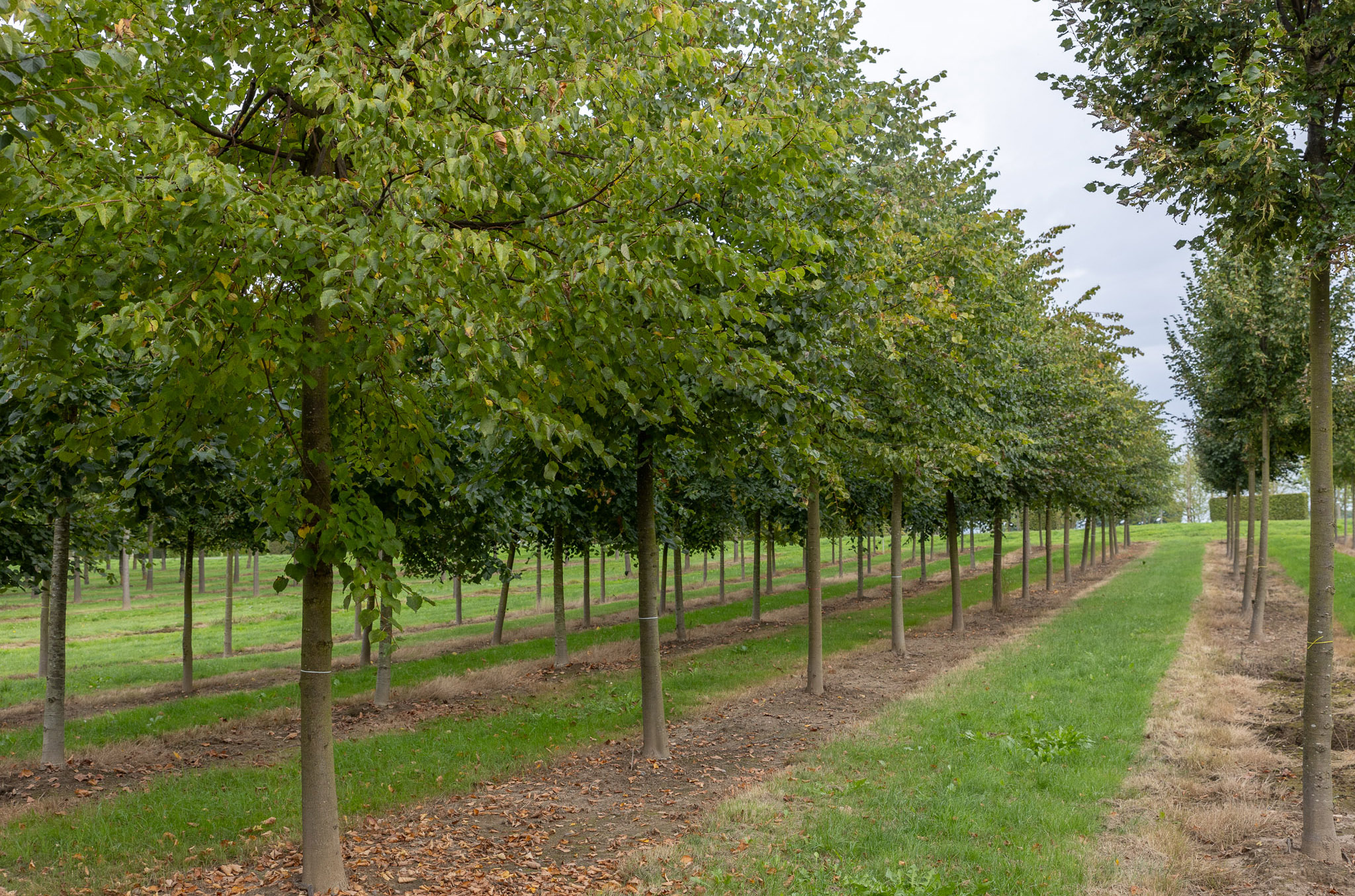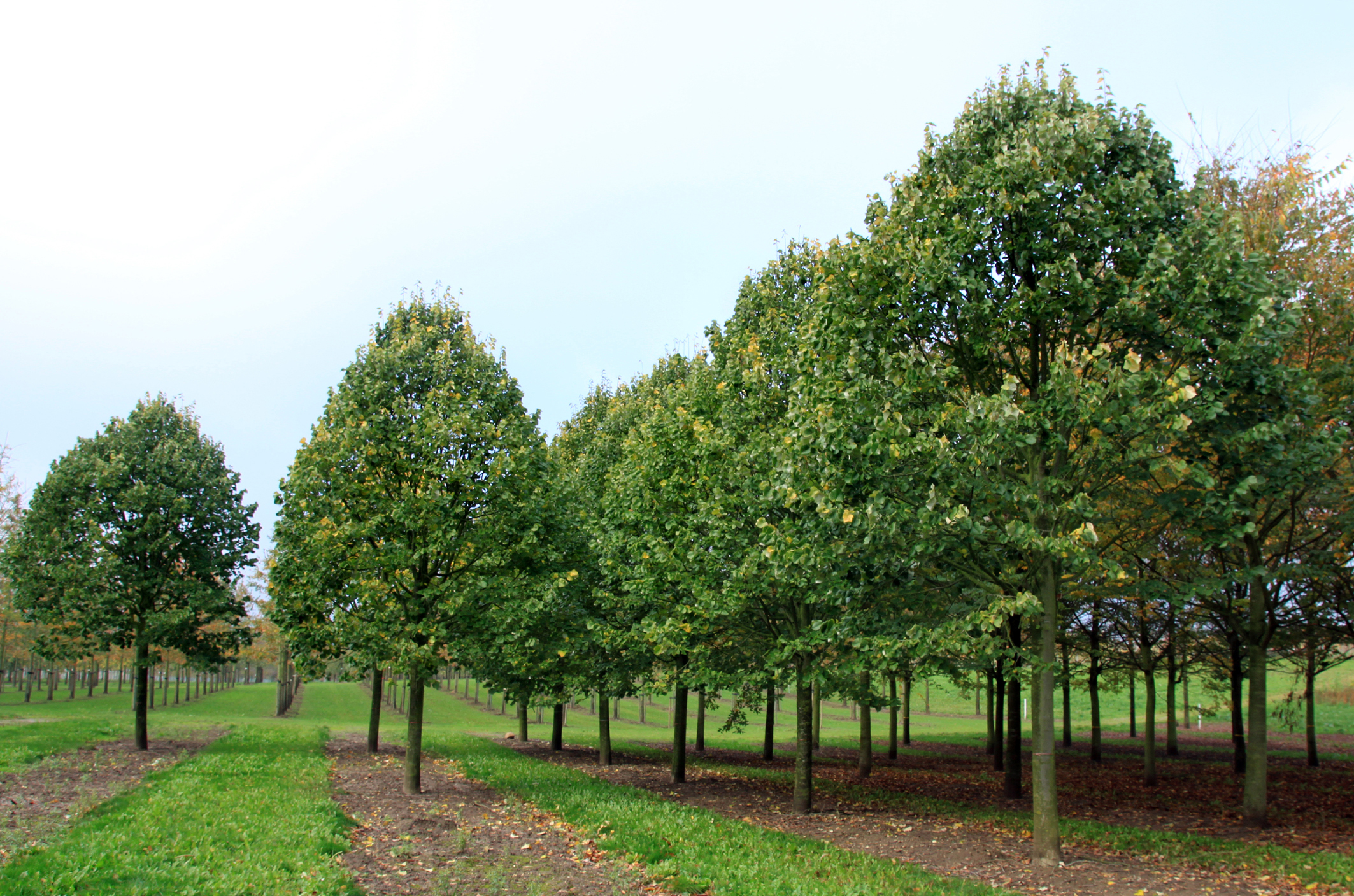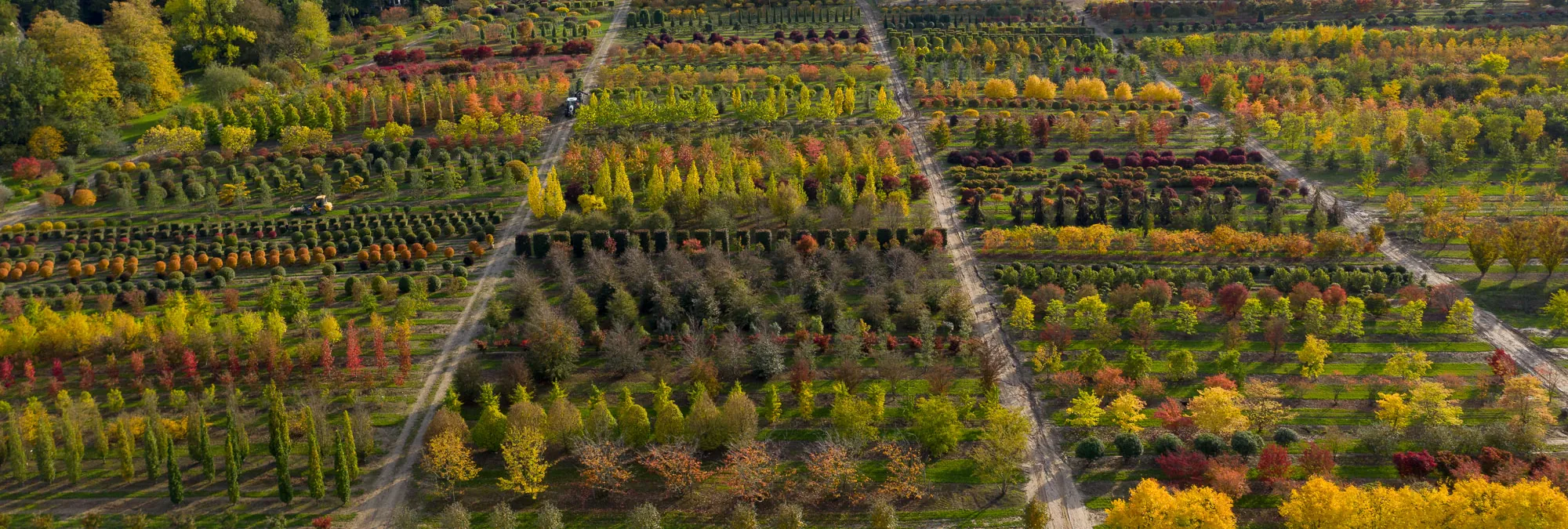
Climate trees are urban trees:
The best species for use in the city
Climate trees for the city of the future:
Carpinus betulus - hornbeam
It is able to adapt to different climatic conditions and is therefore also equipped for climate change.
Catalpa bignonioides - Indian Bean Tree
Particularly heat-tolerant and ideally suited as an insect food plant
Celtis australis - Nettle Tree
Very resistant to radiation and heat, considered an alternative to the plane tree
Cornus mas - ideal for urban locations!
What do city climate resistance, marmalade and non-swimmers have in common?
Crataegus monogyna - Common Hawthorn
Adaptable and undemanding, heat-tolerant, frost-hardy; what more could you want?
Fraxinus ornus - Manna Ash
The ash is one of the most heat- and drought-tolerant trees
Gleditsia triacanthos - Honey Locust
Filigree leaves, fragrant flowers and spectacular legumes paired with drought resistance
Liriodendron tulipifera - Tulip tree
Its characteristics such as drought resistance and heat resistance are well suited to urban areas
Taxodium distichum - Deciduous Cypress, Swamp Cypress
Very healthy and robust, prefers moist locations
FAQ - Häufig gestellte Fragen
Was sind Klimabäume?
Klimabäume sind speziell ausgewählte oder neu gezüchtete Baumarten, die besonders gut mit den veränderten Klimabedingungen in Städten zurechtkommen. Sie sind widerstandsfähig gegenüber Hitze, Luftverschmutzung und neuen Schädlingen und trockenresitent. Beispiele sind der Amberbaum, die Hopfenbuche oder bestimmte Arten von Eichen und Gleditschien.
Warum braucht man Klimabäume in der Stadt?
Städte heizen sich durch den sogenannten „urbanen Wärmeinseleffekt“ stark auf. Ein Klimabaum hilft, diese Hitze zu mildern, indem sie Schatten spenden, Feuchtigkeit verdunsten und die Luftqualität verbessern. Gleichzeitig tragen sie zur Artenvielfalt bei und machen städtische Räume lebenswerter – für Mensch und Tier.
Wodurch unterscheiden sich Klimabäume von herkömmlichen Stadtbäumen?
Ein Klimabaum ist robuster gegenüber extremen Wetterlagen wie Hitzewellen oder längeren Trockenperioden. Viele herkömmliche Stadtbaumarten, wie z. B. die Rosskastanie oder die Linde, kommen mit dem neuen Klima schlechter zurecht oder werden häufiger krank.
Kann man auch in Privatgärten einen Klimabaum pflanzen?
Ja, viele Klimabäume eignen sich auch für Privatgärten. Es ist jedoch wichtig, sich vorab gut zu informieren, welche Arten zur Umgebung passen und ausreichend Platz haben. Baumschulen oder Umweltberatungsstellen helfen bei der Auswahl.

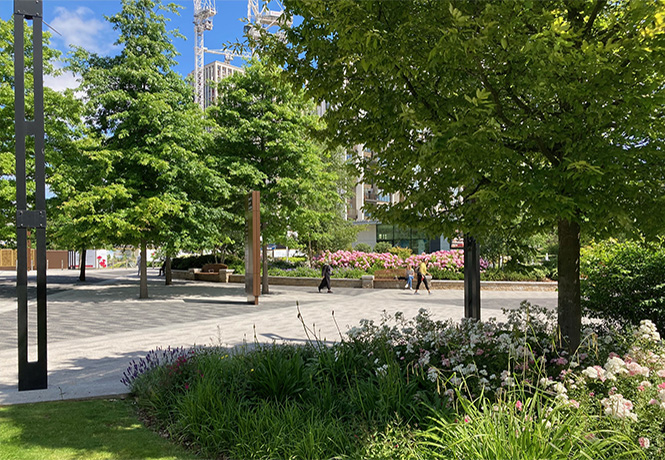
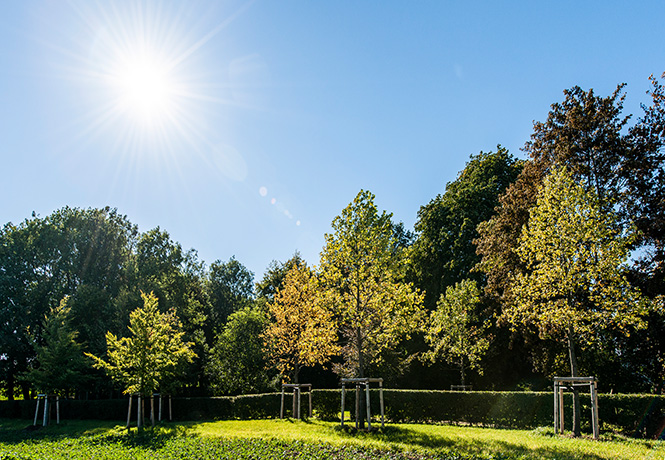
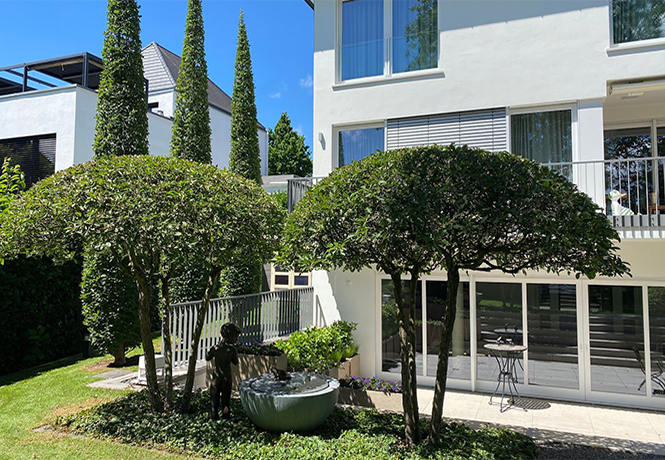
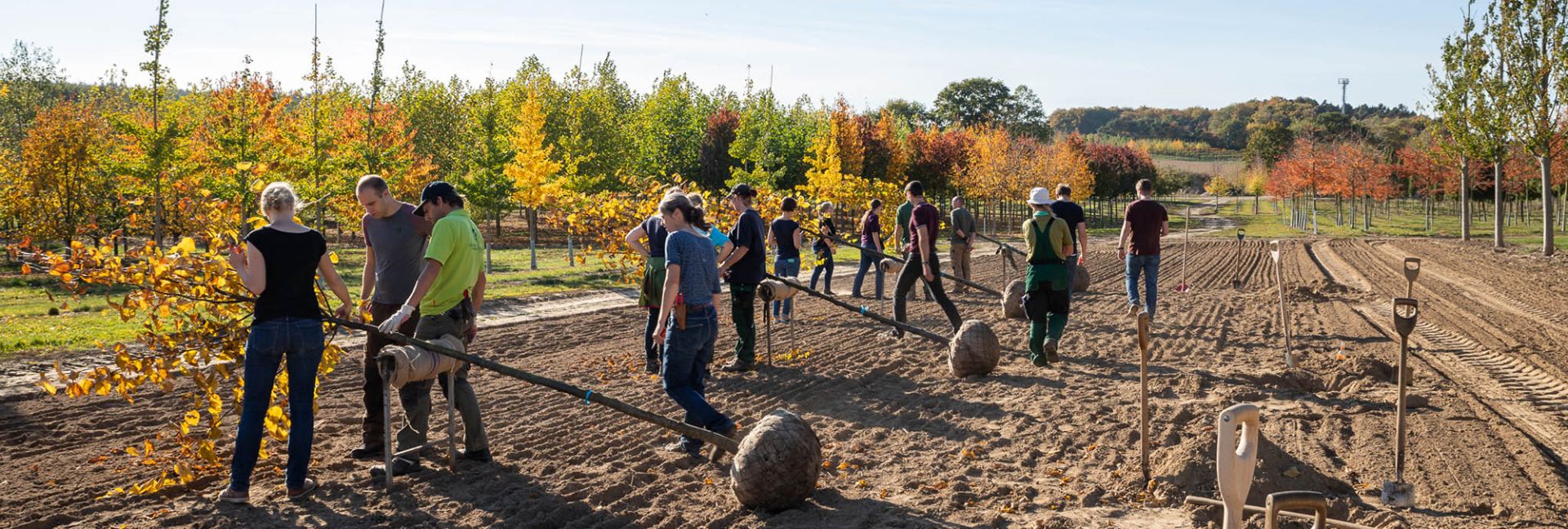
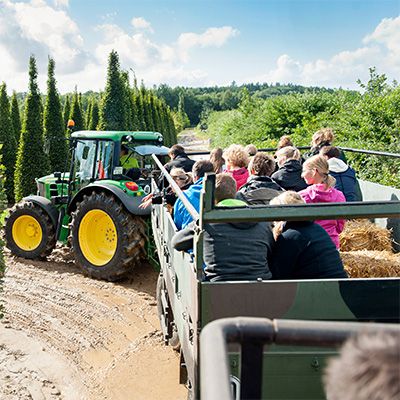
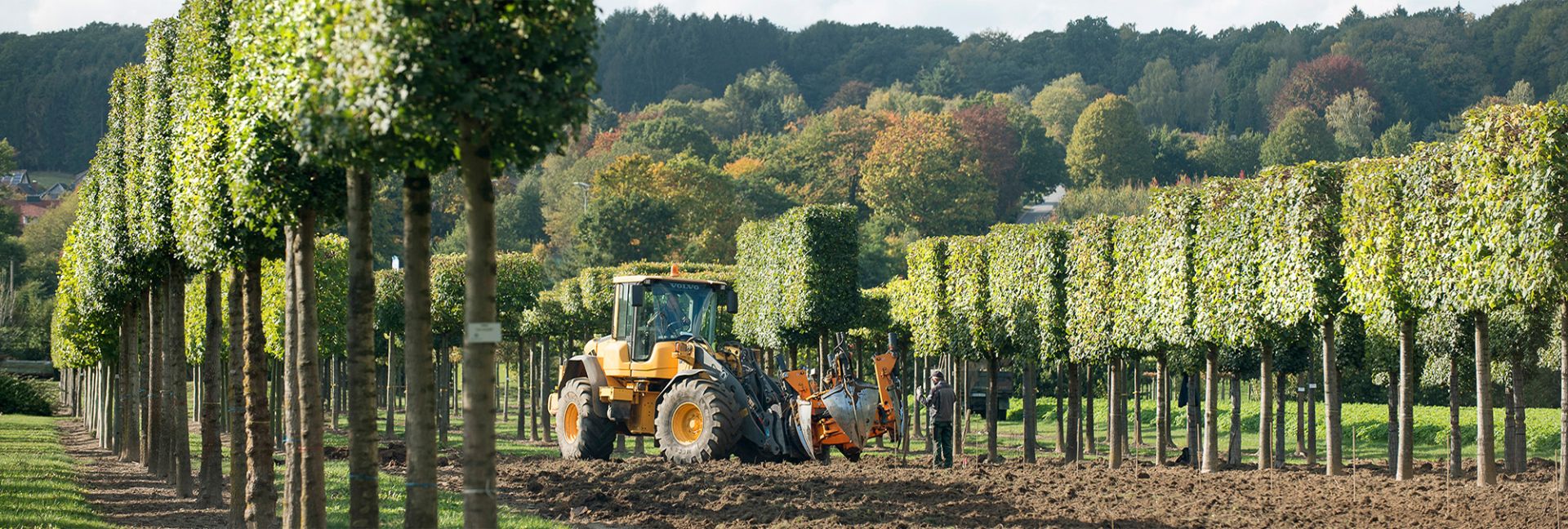

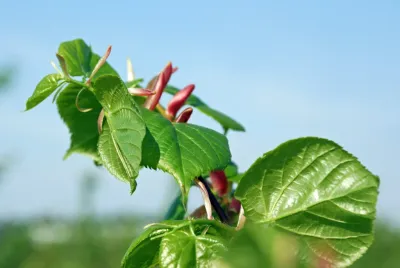
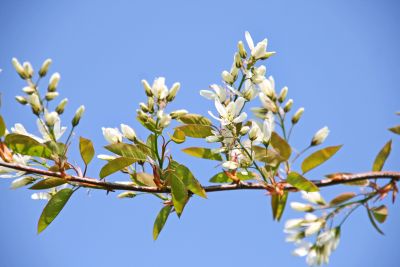

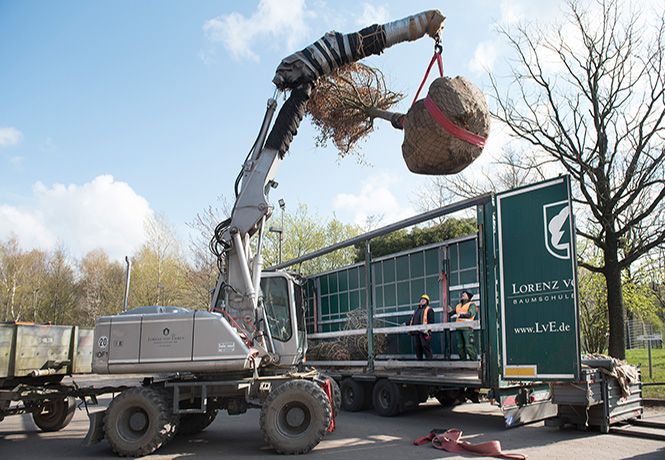
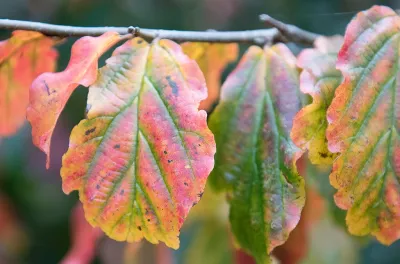

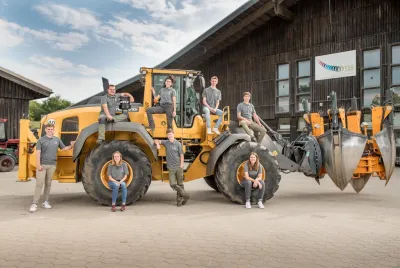
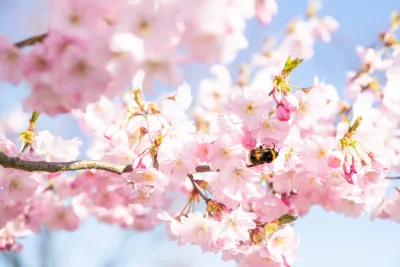
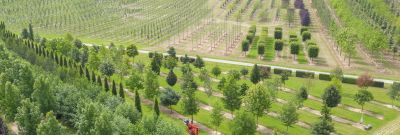

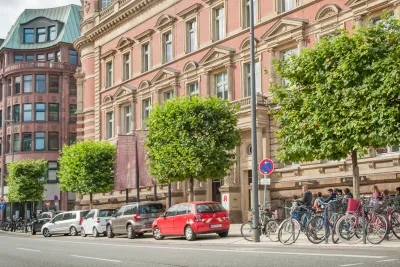
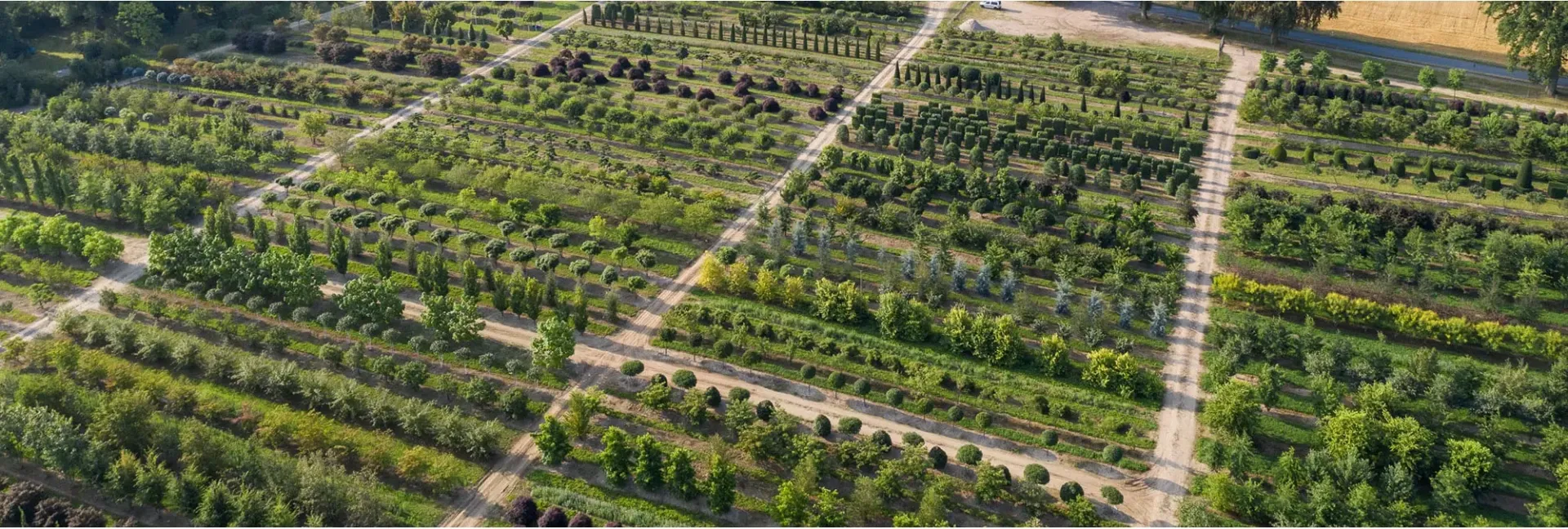
_400x400.webp)
